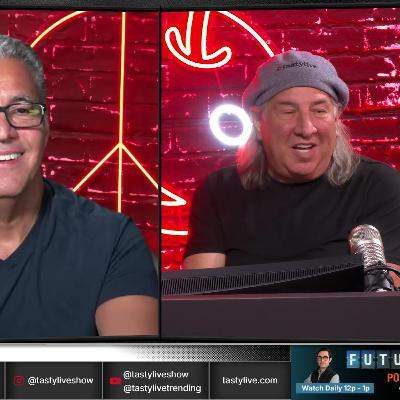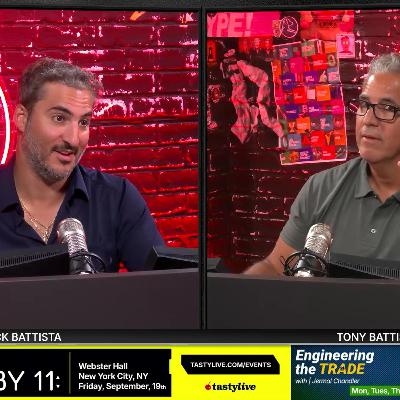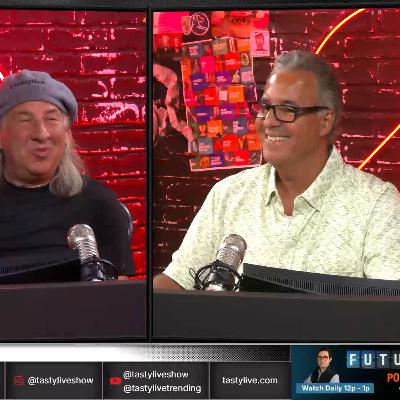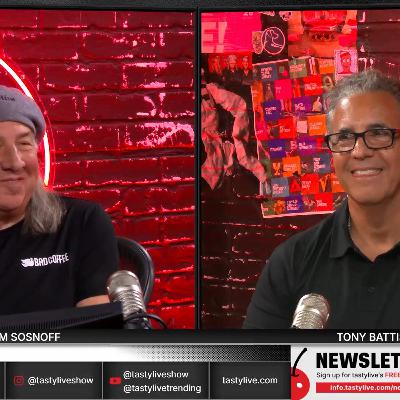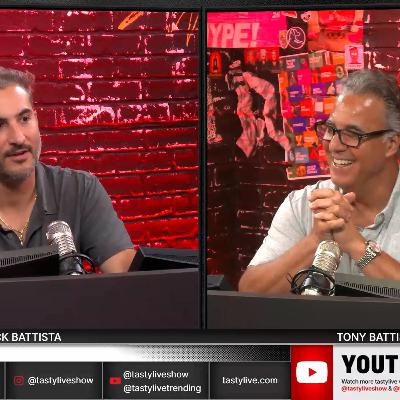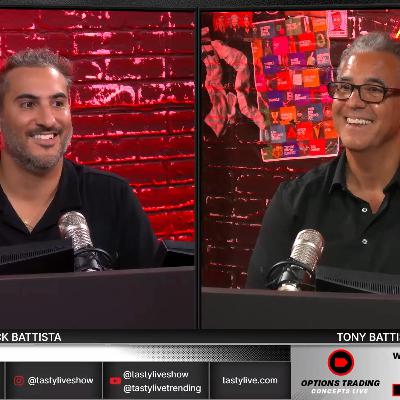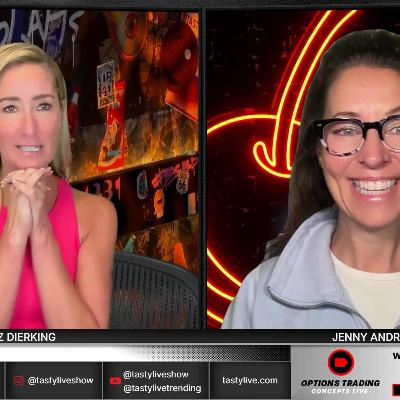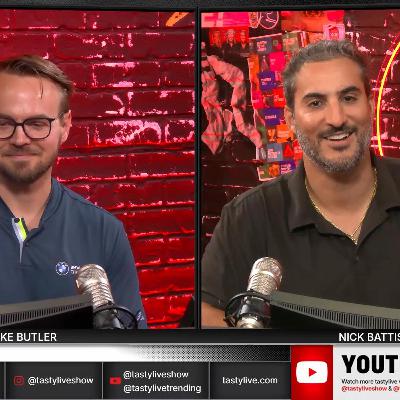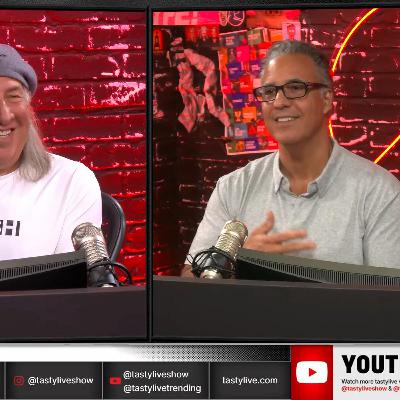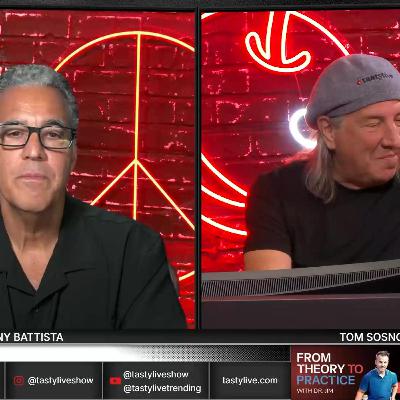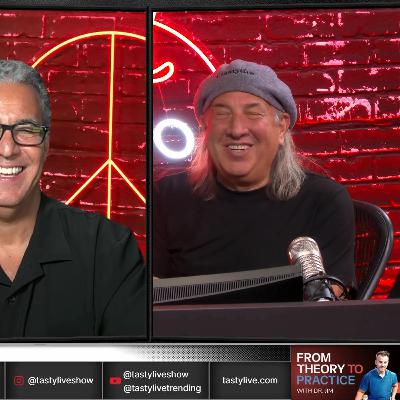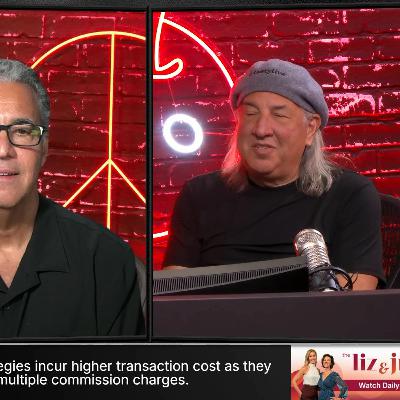Discover tastylive: Market Measures
tastylive: Market Measures

tastylive: Market Measures
Author: tastylive
Subscribed: 48Played: 3,343Subscribe
Share
© ℗ & © copyright 2013 - 2025 tastylive. All Rights Reserved.
Description
It's not always easy to take the measure of a market, whether you've been trading for a day or a decade. On this segment we look under the hood—options probabilities, volatility, trading strategies, futures, you name it—so your trading mechanics are built to manage more winners.
2270 Episodes
Reverse
The market measure segment addressed strategy for breached option strikes, showing that rolling untested sides outperforms both closing positions immediately (36% win rate) or holding to expiration (73% win rate). Rolling can increase win rates to 78% while reducing delta exposure and adding credit, though at the cost of maximum profit potential.
Tom and Tony examined how significant stock rallies affect options sellers, focusing on Palantir (PLTR) and Robinhood (HOOD), which gained 109% and 195% respectively in 2025.
Selling naked 20-delta calls in these stocks produced win rates of 56% for PLTR and 45% for HOOD, but with substantial maximum losses (10x and 8x the credit received). When balanced with short puts, maximum losses decreased dramatically to around 2x-3x credit received.
The analysis demonstrated that while three-times expected moves do hurt sellers, adding the opposite side significantly reduces risk exposure. Options markets had already priced in substantial moves for these volatile stocks, keeping losses within reasonable expectations for balanced strategies.
The segment explored three methods for adjusting troubled short put positions: adding a far out-of-money put wing with a short call spread to reduce buying power requirements, selling calls against the position to flatten delta exposure, and rolling out in-the-money puts to future months to maintain directional exposure while collecting additional credit.
These adjustment strategies help traders manage risk in volatile markets while potentially increasing net credit received and optimizing buying power usage.
Hosts Liz and Jenny analyzed sector ETF correlations and options performance, discovering that popular sector ETFs show remarkably low correlation with each other (mostly near zero), making them effective diversification tools. The study examined XLE (energy), XLK (technology), XLF (financial), XLV (healthcare), and XLU (utilities), finding that financials demonstrated the strongest intersector correlation while utilities showed the weakest due to interest rate sensitivity. Testing 45 DTE, 16 Delta strangles across all sectors revealed consistently high success rates (72-84%) that exceeded theoretical expectations and closely matched SPY performance. The research reinforced the strategy of trading ETF baskets when individual stock IVR drops, as premium levels showed weak correlation with success rates, suggesting sector fundamentals matter more than volatility pricing for strangle performance.
Tastylive research examined 30 years of market performance following three-day weekends, finding Memorial Day typically yields the most positive returns with a 61% chance of upward movement afterward, while markets generally show increased volatility on the first trading day after extended weekends.
Tom and Tony discuss futures scalping strategies, highlighting key differences between options and futures trading approaches.
Futures excel for short-term scalping due to high liquidity, leverage, and low transaction costs, while options work better for longer-term strategic positions. The tastylive platform uniquely normalizes futures contracts by showing ETF equivalents, making position sizing more intuitive.
Notable market moves included NASDAQ dropping 1.25%, Bitcoin falling 3%, and gold rising to near highs at $3,500. The hosts recommended avoiding exotic futures like microether and micronatural gas due to extreme volatility and liquidity challenges.
Daily ranges have contracted 15-33% across major markets since August, compared to January-August 2022 averages. The S&P 500 saw ranges shrink from 96 to 64 points (33% reduction), while Nasdaq ranges dropped from 434 to 316 points (27% decrease).
As volatility declines, traders should adjust position sizing proportionally—reducing exposure by similar percentages as range contraction. For example, trading at two-thirds normal size in S&P positions when ranges are down 33%.
Markets traded in tight ranges during the session, with S&P futures up 5.5 points, Nasdaq up 44, and Russell up 19. Bond markets continued weakness, signaling potential removal of rate cut expectations.
Smaller price moves require tighter trade management and smarter product selection. Currency markets have contracted less than equity indices, potentially offering better trading opportunities for those seeking volatility.
The market measure segment examined how volatility impacts option skew, noting that SPY typically shows put skew because downside risk commands higher premiums. As volatility increases, both calls and puts become more expensive as a percentage of the underlying, though puts increase at a faster rate highlighting why hedging after market moves is challenging.
The market measure analyzed VIX One Day index for zero and one-day options trading strategies. Data revealed that when VIX One Day exceeds standard VIX, traders saw dramatically improved results: iron fly win rates jumped from 69% to 81% with higher average P&L. However, this optimal condition occurred only 8.5% of the time, making it a rare but powerful signal for zero DTE traders.
In this Market Measure segment, Tom Sosnoff and Tony examined the gambler's fallacy and its impact on trading decisions. The segment highlighted how this cognitive bias leads traders to believe patterns will continue or reverse based on past outcomes of independent events.
Using a 10-year study of SPY 16-delta strangles at 45 DTE, the hosts demonstrated that increasing position size after losses doesn't improve profitability but dramatically increases risk exposure. Data showed managing positions at 21 days significantly reduced volatility compared to holding until expiration.
The key takeaway: after winning or losing streaks, probability remains unchanged. Traders should maintain consistent position sizing and management strategies rather than "doubling up to catch up.
Today's research segment was about how option skew reflects the direction of risk velocity in different assets. The study analyzed SPY, IWM, UNG, and GLD over 10 years using 16-delta strangles with 45 DTE managed at 21 days.
Results confirmed that skew accurately indicates potential risk direction. SPY and IWM showed put skew matching their downside risk, while UNG and GLD displayed call skew aligning with their upside risk potential.
Interestingly, SPY showed larger upside outliers than downside ones, likely because markets must rise more percentage-wise after a decline to reach previous levels. The study reinforces that option pricing reflects rational expectations expensive puts or calls signal where explosive moves might occur, not necessarily market direction.
In today's Skinny on Options: Abstract Applications, Dr. Jim Schultz explores the interconnected metrics traders must balance when entering positions. For premium sellers, probability of profit typically ranks highest, followed by directional bias, credit collected, and theta decay. When maximizing probability of profit (selling further out-of-the-money options), traders sacrifice credit collected, directional bias, and theta decay. Conversely, maximizing credit (selling closer to at-the-money) decreases probability but increases directional exposure and theta decay. To help, Tom Sosnoff emphasized a critical rule: never add capital to losing positions requiring adjustments. While occasionally adding to winning positions during high implied volatility, he rarely opens new positions solely to neutralize portfolio deltas.
Understanding these trade-offs helps traders make informed decisions, recognizing that for every "gimme" in trading, there's always a "gotcha."
Tom Sosnoff and Tony Battista discuss the dynamic of theta in options trading during the Option Jive segment. They emphasize that understanding the theta ratio is crucial for predicting daily profits in premium selling. The conversation covers the importance of managing positions at 21 days to expiration and how this can mitigate volatility while improving long-term returns. The hosts highlight the challenges of achieving a daily theta of 1%, especially in low volatility environments, reinforcing the need for strategic management in options trading.
Tom and his Tony discuss trading strategies in a low volatility environment, particularly the selling of puts and the implications of VIX levels on trading decisions. They address viewer questions on managing buying power and the importance of delta reductions when adjusting positions. Emphasis is placed on the significance of implied volatility as a guiding metric for capital deployment. The conversation also touches on practical tools available on the Tastytrade platform for tracking positions and roles.


